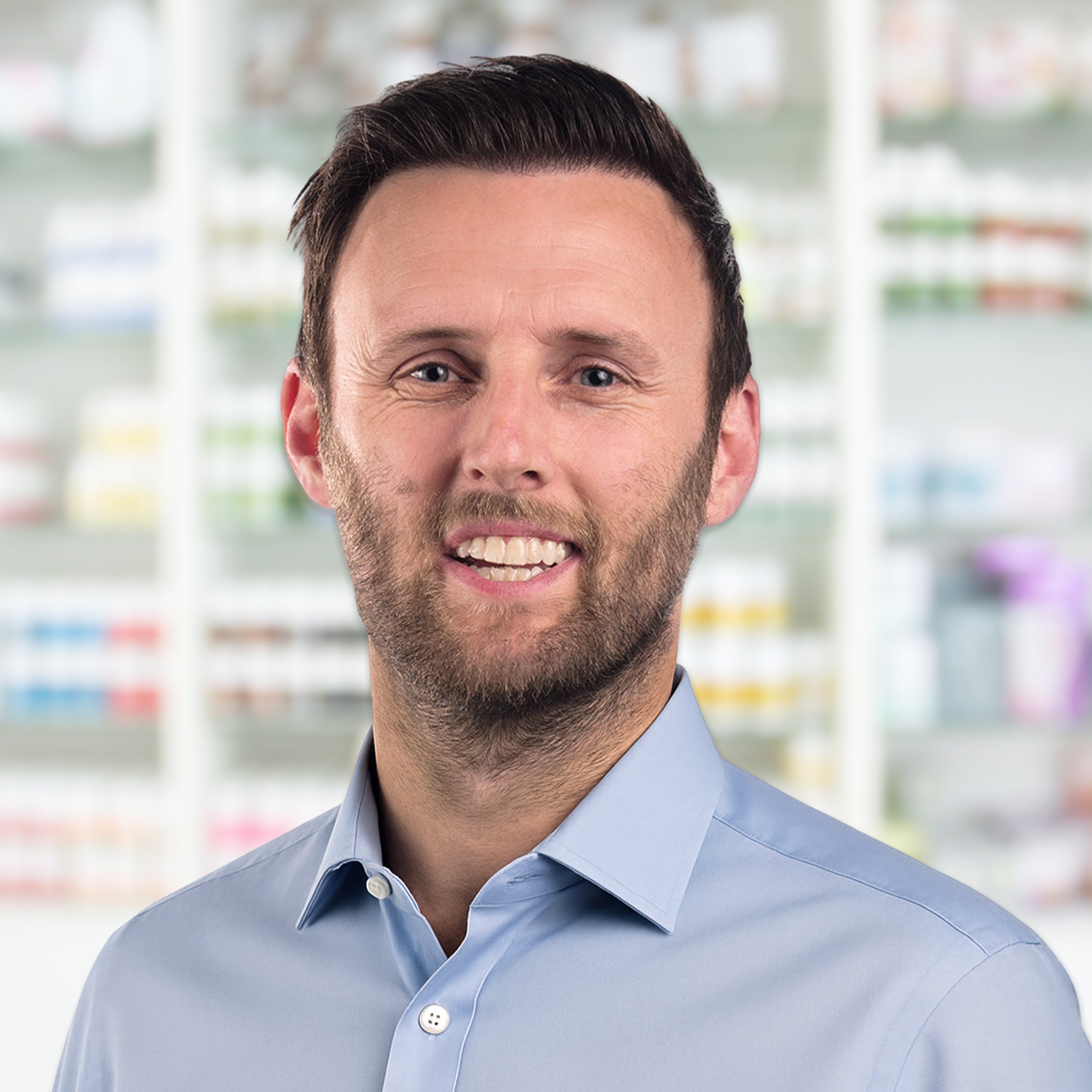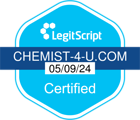How light therapy helps with acne, psoriasis and eczema

If you suffer from skin issues such as eczema, psoriasis or acne and want to improve your condition, light therapy may help.
Different types of light therapy, such as blue light, red light and ultraviolet (UV) therapy, all work in various ways to target skin problems. Light therapy can be done in a hospital setting or at home using a light device.
This guide will tell you everything you need to know about light therapy and how it can be used to treat different skin conditions.
What is light therapy?
UV light therapy
UV light therapy uses bright UV lights on your skin. It’s a treatment used in dermatology that can help with various skin conditions.
The UV light used in therapy is the same type of light that comes from the sun; however, it comes from an artificial source during your treatment.
UV light therapy is generally repeated multiple times a week for a few months. If you’re having this treatment regularly, your healthcare provider may advise you to avoid exposure to sunlight or recommend using sunscreen when you go outside.
LED light therapy
Light-emitting diode (LED) light therapy is a noninvasive skincare treatment that uses different wavelengths of light, including red and blue. It doesn’t contain UV rays, making it safe for regular use.
Each session of LED therapy typically lasts around 20 minutes, with the average person needing up to 10 sessions. The number of sessions will depend on the treatment used, your skin condition and the severity.
Red light therapy
Red light therapy uses low levels of red light to help improve the appearance of skin. It increases the production of mitochondria, which are cells' energy sources.
When the light enters your skin, the mitochondria absorb it to make more energy, helping the cells repair themselves. With more energy, your other cells can work more effectively. Certain cells will absorb the light wavelengths, which stimulates them to work.
Blue light therapy
Blue light therapy uses light to treat conditions on the skin or just underneath. When used repeatedly, blue light therapy is considered effective.
Blue light kills certain bacteria on the skin and reduces inflammation while stimulating collagen production and enhancing cellular turnover.
Sessions of blue light therapy can last between 15 and 90 minutes. The length of treatment depends on the area being treated, its size, and whether a topical medication has been applied.
Light therapies for acne
UV light therapy for acne
Previously, doctors have treated acne using UV light. However, doctors no longer use UV light to treat acne. Although it can clear up acne, repeated exposure can damage the skin and worsen breakouts.

Do sunbeds help acne?
There’s no evidence to suggest that using sunbeds can improve acne. Your skin might be more light-sensitive if you already use medicine to treat acne.
Using a sunbed could cause painful damage to your skin and increase your risk of skin cancer. You shouldn’t use a sunbed to try and clear your acne.
Red light therapy for acne
As red light therapy penetrates deep into the skin, it reaches the oil glands and reduces the amount of oil produced. Excess oil is one of the main culprits responsible for acne, so reducing the amount of oil produced makes an acne breakout less likely.
Because it works beyond the surface of your skin, it stimulates blood circulation and promotes healing. This reduces inflammation, clears acne, and improves the appearance of the skin. It can also promote healing and decrease the visibility of acne scarring.
Blue light therapy for acne
Blue light therapy targets the acne-causing bacteria on the skin and inside the hair follicles. It kills the bacteria and prevents new pimples from forming.
The treatment has anti-inflammatory benefits and can reduce the amount of oil produced by the sebaceous glands, which are the glands responsible for producing oil. Blue light therapy can also reduce other symptoms of acne, such as redness.
Studies have shown that 77% of people treated with blue light therapy saw an improvement in their acne.[1]
Does LED light therapy help acne?
For many people, LED light therapy is an effective acne treatment. It can significantly improve your symptoms. Most people undergoing LED light therapy will need multiple sessions before seeing noticeable improvements.
Although LED light therapy is effective, remember that it will probably not permanently remove your pimples.
Light therapy for psoriasis
UV light therapy for psoriasis
Ultraviolet B (UVB) light therapy is usually recommended for treating psoriasis when topical treatments haven’t worked. It slows down the production of skin cells, using a light invisible to the human eye, which makes it an effective treatment for certain types of psoriasis.
Another type of UV light therapy used to treat psoriasis is psoralen ultraviolet light A (PUVA) light therapy. First, you’re given a tablet containing psoralens, or it’s applied directly to your skin. Your skin is then exposed to ultraviolet A (UVA), which penetrates the skin more deeply. It's usually used in cases of severe psoriasis.
Sunbeds for psoriasis
Using a sunbed is different from having hospital-based UV therapy for psoriasis. Many sunbeds use mostly UVA light, which is ineffective at treating psoriasis without adding psoralen.
Sunbeds increase the risk of UV exposure without the benefits of treating psoriasis.
Red light therapy for psoriasis
Red light therapy helps with psoriasis by regulating the abnormal growth of skin cells and reducing inflammation.
Studies have shown that people who used red light therapy to treat plaque psoriasis, the most common type, cleared 60% to 100% of their skin.[2]Doctors recommend red light therapy for moderate to severe psoriasis or if it has not responded to other treatments. Red light therapy doesn’t include UV rays, making it a mild way to help with psoriasis.
Blue light therapy for psoriasis
Blue light therapy can slow down the production of keratinocytes, the main type of cell in the outer layer of the skin, helping to improve psoriasis.
Research has shown that blue light therapy is as effective as red light therapy for treating psoriasis. However, the study concluded that blue light therapy treated erythema (or reddened skin) better.[3]
Does LED light therapy help psoriasis?
LED light therapy can improve the symptoms of psoriasis. It won’t cure psoriasis, but it can help you manage your condition and improve the quality of your life.
The effectiveness of LED light therapy depends on the severity of your psoriasis and the type of therapy used.

Light therapy for eczema
UV light therapy for eczema
UV light therapy can treat eczema all over the body or individual parts, such as your hands and feet. When the affected area of the skin is exposed to UV light, it helps to reduce inflammation caused by eczema.
UV light reduces the number of cells called T-cell lymphocytes. These cells are known to worsen the ongoing inflammation associated with eczema.[4]
Do sunbeds help eczema?
Sunbeds are not advised for treating eczema. In some cases, UV exposure can lead to sunburn, damaging the skin barrier and worsening your eczema.
Red light therapy for eczema
Red light therapy for eczema is an effective treatment. The treatment's ability to penetrate the skin’s surface helps relieve symptoms associated with eczema and improves the skin's appearance.
If you have eczema, your skin barrier can become compromised. Red light therapy encourages collagen production, which assists in restoring the skin barrier.
Red light therapy can be used alone or alongside other treatments for eczema. It can relieve itching, redness and dryness.
Blue light therapy for eczema
Blue light therapy is widely used to treat eczema. It reduces the bacteria on the skin that causes flare-ups, minimising the chance of an eczema flare-up. Reducing inflammation and adjusting the immune system's response helps to manage the symptoms of eczema.
Studies have shown that blue light therapy was effective at reducing symptoms of eczema when used for 4 weeks, 3 times a week. [5]
Does LED light therapy help with eczema?
LED light therapy can effectively treat eczema. It reduces the inflammation on your skin and relieves symptoms such as itching, giving your skin time to heal. However, LED light therapy doesn’t make your eczema go away long-term.

Light therapy can be an effective, pain-free way to treat skin conditions and manage symptoms. However, patience is important with this treatment, as skin conditions might take a while to clear up.
If your condition doesn’t improve with light therapy, you should talk to your healthcare provider to discuss other treatment options. If you want more information about your skin condition, read our guides or visit the NHS website.
Sources
- [1] https://pubmed.ncbi.nlm.nih.gov/23278295/
- [2] https://www.healthcentral.com/condition/psoriasis/red-light-therapy-for-psoriasis
- [3] https://www.mdpi.com/2075-1729/11/7/670
- [4] https://www.sciencedirect.com/science/article/abs/pii/S0896841121000421
- [5] https://karger.com/drm/article-abstract/232/4/496/114482/Prospective-Randomized-Study-on-the-Efficacy-and?redirectedFrom=fulltext





